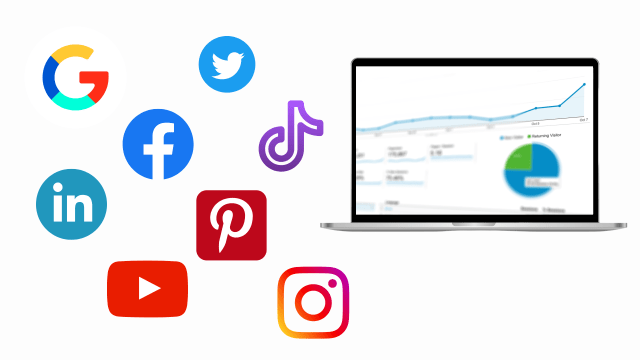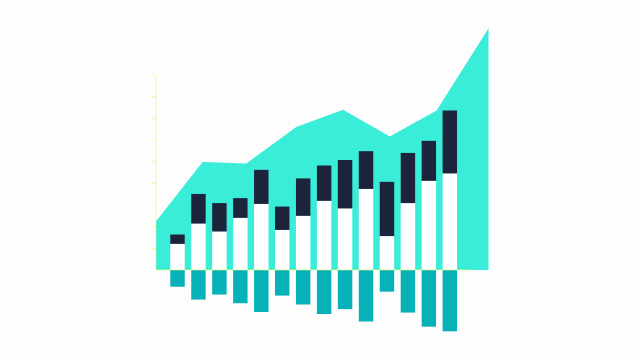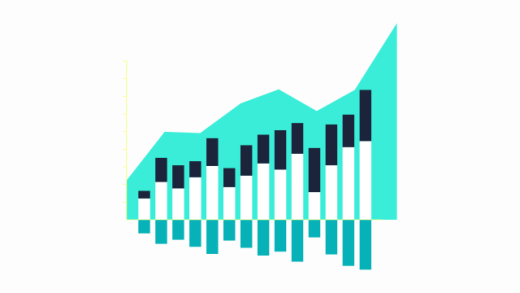Everything You Need to Know: SEM and Paid Ads
Everything You Need to Know: SEM and Paid Ads

Much like SEO, paid advertising has evolved significantly since it became available to businesses. From spray and pray, which relies on volume over strategy, to a far more targeted approach, Search Engine Marketing (SEM) strategies have evolved over the years. Likewise, the capabilities of various ad platforms have also evolved.
Knowing what SEM is and how it benefits your business is essential as a business owner. That’s what this blog is all about, covering the different ad types, the evolution of tech capabilities that enable them, and how you can leverage them today.
What is search engine marketing?
Search Engine Marketing is an effective way to promote your website(s) and increase your visibility on search engine results pages. Basically, it involves two main components: Paid Search Advertising and Search Engine Optimization (SEO).
Paid search advertising: Paid Search is when advertisers bid on keywords related to their products or services to increase their visibility. When users search for those keywords, the ads appear above the organic (non-paid) search results. Advertisers pay the search engine a certain amount whenever their ad is clicked, leading to a model known as pay-per-click (PPC) advertising. The most popular platform for this type of advertising is Google Ads, but it also includes Bing/Microsoft Ads and Yahoo Gemini.
SEO: This involves optimizing websites to improve their visibility and rankings in organic (non-paid) search results. This process includes optimizing website content, improving site structure, utilizing relevant keywords, acquiring high-quality backlinks, and other techniques to increase organic traffic and improve search engine rankings.
By combining paid advertising and SEO, Search Engine Marketing helps maximize a website’s visibility and drive relevant traffic from search engines. This is a great way to increase brand exposure, attract potential customers, and achieve your marketing goals.
What are the benefits of search engine marketing?
Search Engine Marketing allows you to enhance your online presence and effectively reach your target audience: helping drive demand and, ultimately, sell more. Here are some of the key benefits:
Optimize your marketing funnel: Revenue growth demands a steady and predictable lead flow. SEM allows you another pathway to generating leads to meet your sales targets.
Generate qualified and engaged leads: Engage with your target audience over different digital channels before they are sales-ready. By combining various paid strategies like re-marketing, paid search, display, social media, programmatic, and more, you can ensure your customers get to know and trust you before they fill out a form or request a demo.
Stand out: With thousands of options at their fingertips, stand out and get noticed by your target customer by offering them what they need, exactly when they need it. By leveraging various data-backed behavioural signals paired with persuasive advertising, you can increase your audience’s chances of coming across your website when they are ready to buy.
Immediate results: Unlike organic SEO efforts that can take time to yield results, SEM offers the advantage of immediate visibility and traffic.
Cost control: With SEM, you have control over advertising costs. You can set daily budgets, adjust bids, and choose how much you will pay for clicks or conversions.
Measurable results: SEM provides comprehensive tracking and analytics tools that allow you to measure the performance of your campaigns accurately.

What are the top paid advertising formats?
Different types of ad networks are available within Search Engine Marketing (SEM). Each format focuses on distinct advertising objectives, allowing you to choose the most suitable format based on your target audience, budget and campaign objectives.
Here are some of the effective paid advertising channels to consider:
Paid search ads: Google Ads is the most popular and widely used ad network for SEM. It allows advertisers to display their ads on Google search results pages and partner websites, YouTube, and other Google-owned properties. Though less popular, Bing/Microsoft Ads and Yahoo Gemini are other options that enable advertisers to use other channels for search engine advertising.
Amazon advertising: Promote your products directly on Amazon’s e-commerce platform. Amazon Ads offers various ad formats, such as Sponsored Products, Sponsored Brands, and Display Ads, to reach customers while they shop on Amazon.
Social media advertising: Platforms like Facebook, Instagram, Twitter, LinkedIn, and Pinterest offer their own advertising networks that provide targeted ad placement options based on user demographics, interests and behaviours.
Display ads: These ads use visual elements, such as images, graphics, videos, or interactive media, to appeal to your target audience. Unlike search ads, which appear on search engine results pages (SERPs), display ads are shown on websites within the Google Display Network (GDN) or other display ad networks. These ads can appear as banners, sidebar ads, interstitial ads, or in other designated ad spaces on websites that are part of the display network.
Re-marketing ads: Also known as retargeting ads, Re-marketing Ads target users who have previously interacted with your website or shown interest in your products or services. Re-marketing allows you to re-engage these users by displaying relevant ads as they browse other websites or use social media platforms.
These are just a few examples of the ad networks available within SEM. You can choose the platforms that best align with your goals, target audience, and budget to effectively reach and engage potential customers.
Trends in search engine marketing
Each advertising platform strives to differentiate itself by offering features tailored to meet the specific needs of organizations. However, a common thread among these platforms is their unwavering commitment to continuously enhancing existing features and introducing new ones to address the evolving business needs.
Here are some trends we’ve observed in the field of SEM in recent years and continue to shape the industry today.
Automation and AI: The use of automation and artificial intelligence (AI) in SEM is expected to continue growing. Machine learning algorithms can optimize bidding strategies, ad targeting, and campaign management, allowing you to achieve better results with less manual effort.
Privacy and data protection: With increasing concerns about privacy and data protection, there may be continued shifts in how data is collected and utilized for SEM. Changes in tracking mechanisms, such as the deprecation of third-party cookies, may lead to the adoption of alternative targeting methods, such as contextual targeting or first-party data utilization.
Voice search and mobile optimization: Voice search is on the rise, and optimizing campaigns for voice-activated devices and mobile platforms has become increasingly important. You need to adjust your keyword targeting and ad formats to align with voice search queries and ensure a seamless user experience on mobile devices.
Local and hyperlocal targeting: As consumers prioritize local businesses and seek immediate solutions, local and hyperlocal targeting remains crucial. Advertisers may focus on targeting users based on their proximity to physical store locations, using location extensions, and leveraging local inventory ads.
Video advertising: Video continues to gain popularity as a content format, and video advertising is expected to grow in significance. Advertisers may invest more in creating compelling video ads and utilizing platforms like YouTube to reach and engage their target audience effectively.
Cross-channel advertising: Integrated and cross-channel advertising approaches, such as combining search ads, display ads, and social media ads, is a prevalent strategy. Creating consistent messaging and experiences across various channels is essential to maximize reach and engagement.
Emphasis on user experience: User experience (UX) is a critical factor in campaign success. You should prioritize optimizing landing pages, improving site speed, and delivering relevant and personalized ad experiences to enhance the overall user experience and drive better campaign performance.
How Google responds to search engine marketing trends
Over the past few years, Google Ads has significantly changed and introduced new features to enhance the advertising experience. These changes focus on automation, audience targeting, and cross-channel advertising to enhance advertisers’ ability to effectively reach and engage target audiences. Here are some of the significant changes:
| Update | What changed? |
| Expanded text ads | Expanded text ads increase the character limits for headlines and descriptions. This addition allowed advertisers to create more detailed and compelling ad copy to engage users. |
| Smart bidding | Google Ads introduced smart bidding strategies powered by machine learning. These bidding strategies, including Target CPA (Cost Per Acquisition), Target ROAS (Return on Ad Spend), and Maximize Conversions, leverage historical data and user signals to optimize bids and maximize campaign performance. |
| Audience targeting enhancements | Google expanded audience targeting options, including the introduction of Custom Intent Audiences, which allow advertisers to reach users based on their demonstrated intent and behaviour, both on and off Google platforms. |
| Local campaigns | Local is essential for search. Local Campaigns help businesses drive foot traffic and physical store visits. Local campaigns utilize location data and ad formats like location extensions and map ads to target users in specific locations and promote nearby businesses. |
| Responsive search ads | This ad format enables advertisers to provide multiple headlines and descriptions, and Google automatically tests different combinations to determine the most effective ad variation. |
| Discovery campaigns | Allows advertisers to reach users across multiple Google platforms, including YouTube, Gmail, and the Discover feed. Advertisers can showcase their products, services, or content to users based on their interests and behaviours. |
| Performance max campaigns | Google introduced Performance Max campaigns in 2021. This campaign type combines various ad formats, including text, display, and video ads, to maximize performance and reach across multiple Google properties and networks. |
How we handle your search engine marketing
The digital market is crowded and highly competitive; launching an ad campaign and leaving it to run for extended periods of time no longer works. Taking a strategic approach and improving them continuously is the only path to success. We can help. Here’s what we do for businesses like yours.
Map performance against business goals: We first need to understand your organization’s goals and assess whether your ad accounts are set up to benefit you. Do you need to boost revenue and generate new business, or are you more focused on increasing your click-through rates (CTR) and form fills? With this information, we can confidently determine if SEM is the right fit for your advertising needs and budget.
Track everything but optimize what matters: From the instant your target audience lays eyes on your ad to when they become a customer, we diligently track every interaction at each point of contact. We gauge every action, whether it is a typical goal such as form-fills or a distinctive measure like call tracking, to determine which one contributes the most towards your objectives. Why do we do this? Because without measurement, optimization is impossible.
Implement paid strategies that impact your bottom line: Have you thoroughly considered your channel mix and spend allocation to achieve your goals? It’s imperative that we understand your target audience’s buying journey and online behaviour in order to optimize and generate sales-ready leads.
Monitor audiences to surface improvements: Are you ready to take your audience engagement to the next level? There may be untapped audience segments that you haven’t even considered yet. It’s time to explore new options and discover what works best for your business. Through a comprehensive analysis of both observe-only audiences and first-party client data, we can reveal fresh opportunities to increase your market penetration and revenue streams. Let’s work together to develop the most effective strategy for your business.
With our comprehensive SEM services, including SEM/PPC, Display, and Social Media advertising, we have the expertise to drive impactful results for your business. Our team of experienced ad strategists is dedicated to maximizing your return on ad spend (ROAS) and helping you achieve your business goals.
From PPC advertising and retargeting to YouTube and LinkedIn marketing, we offer a wide range of paid advertising services to ensure your brand reaches the right audience at the right time. Partner with us today and experience the power of targeted, results-driven SEM campaigns.
The post Everything You Need to Know: SEM and Paid Ads appeared first on Search Engine People Blog.
(8)


